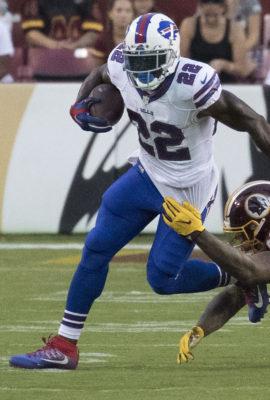
To be called an amateur at something would generally be taken as an insult. Especially when it is a thing you love and may pursue as a career path. But there’s an exception in the one place where the term amateur becomes sacrosanct: college sports.
Students are expected to play “for the love of the game” while their coaches make millions, and billions are being thrown around in TV contracts. Some of the highest-paid public employees in many states are college football coaches. And while the argument that they are on scholarship is a valid one, these student-athletes are essentially workers who are making millions or even billions of dollars for their universities.
The question has been debated for decades. Should college athletes be paid? “No” may have been an acceptable answer in the past, but not anymore.
Many who are against college athletes getting paid argue that student-athletes are students first and that education is of greater importance. But in many cases that is proven to be false.
Look back a few years to the University of North Carolina scandal where for 18 years, thousands of students took fake classes in order to keep them eligible to play. Or in 2001 when University of Georgia’s head coach Jim Harrick and his son were caught paying players expenses and getting them higher grades in classes they would rarely attend. And the list goes on.
These institutions are providing a disservice to players by easing them through school so that they can stay on the field to improve their chances to win and subsequently increase their profits.
Then there are those who think by putting money into college sports, that things will be out of control. But the fact of the matter is, there are already billions of dollars circulating throughout all of college sports.
Major college sports have already become hyper-commercialized. Look no further than this past weekend of college football matchups. The conference championship games often bring out the most prominent programs in college football to face off for a chance to play in the Rose Bowl Game presented by Northwestern Mutual or the Allstate Sugar Bowl.
Then there is “pay for play,” which is already happening in some capacity and it is giving clear advantages in recruiting to the most profitable schools.
USC gave Reggie Bush and his family hundreds of thousands of dollars in gifts to incentivize his commitment to the Trojans. And it isn’t just found in the recruitment of players.
Take Nevin Shapiro, the former Miami booster who provided millions of dollars and benefits to 72 of the University of Miami football players and other athletes between 2002-10.
So while some players receive monetary compensation against the rules of the NCAA, the majority of student-athletes are left to play these sports for the university, but not receive pay. It is essentially an employer-employee relationship but without pay.
A study by Drexel professor Ellen Staurowsky found that 86 percent of off-campus athletes playing college football on a “full scholarship” actually lived below the poverty line because their full scholarships fell short in providing everything they needed. That is because, under the current rules, virtually any gift, meal or otherwise could get them in hot water with the NCAA.
This doesn’t even take into consideration the players who are either on partial scholarship or no scholarship at all. All this to say, the study also found that each Division I football player would be worth $137,357 per year if there were shared revenues like in pro sports, but instead, the universities are making money off these players likeness.
While players are not currently considered employees, maybe they should be. Because in 2014, the National Labor Relations Board Chicago regional director, Peter Sung Ohr, agreed that Northwestern scholarship football players are employees and may be represented by a union. That ruling was later overturned by the NLRB at large, but the original decision provides a much-needed perspective in the conversation.
The ruling by Ohr stated, “The players spend 50 to 60 hours per week on their football duties during a one-month training camp prior to the start of the academic year and an additional 40 to 50 hours per week on those duties during the three- or four-month football season.”
These hours are more than many full-time employees spend at work. This is also logistically more time than can be spent studying and doing homework because of their class and athletic schedules. This is not to mention the restrictive nature of their athletic schedules, where they can’t take classes that conflict with their sports. Coaches virtually control the student’s schedules, not their academics.
Most importantly, the question of paying college athletes often boils down to a conversation about Title IX. Many athletic directors view the ban on sex discrimination at educational institutions as an insurmountable problem when it comes to paying collegiate athletes because some believe colleges can’t pay male players because they would also have to pay female players, which financially would be impossible. But that is a blatant over exaggeration.
With billions of dollars in sports revenue at their disposal, colleges would be able to accommodate Title IX when reorganizing their budgets and distribute money proportionally between the sexes.
I’m not here to argue for millions of dollars per athlete but paying athletes enough for them to afford living necessities without violating NCAA rules is a start. And with the current Title IX every time male athletes pay increases, there would be, under the law, a reasonable and proportional increase to female athletes.
So why is it OK to have a big business that is set on maximizing profits but the workforce is working for free? Well, that’s simple. It isn’t.

